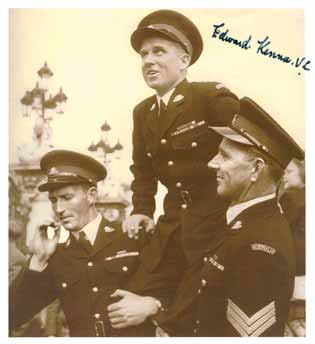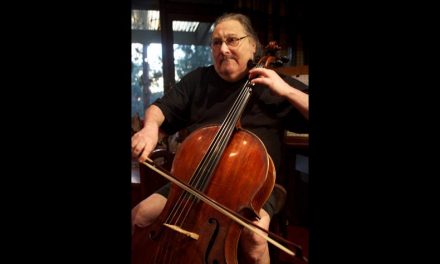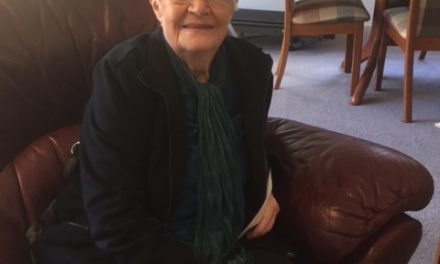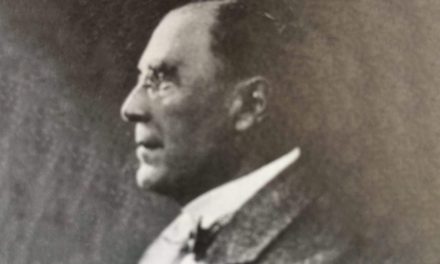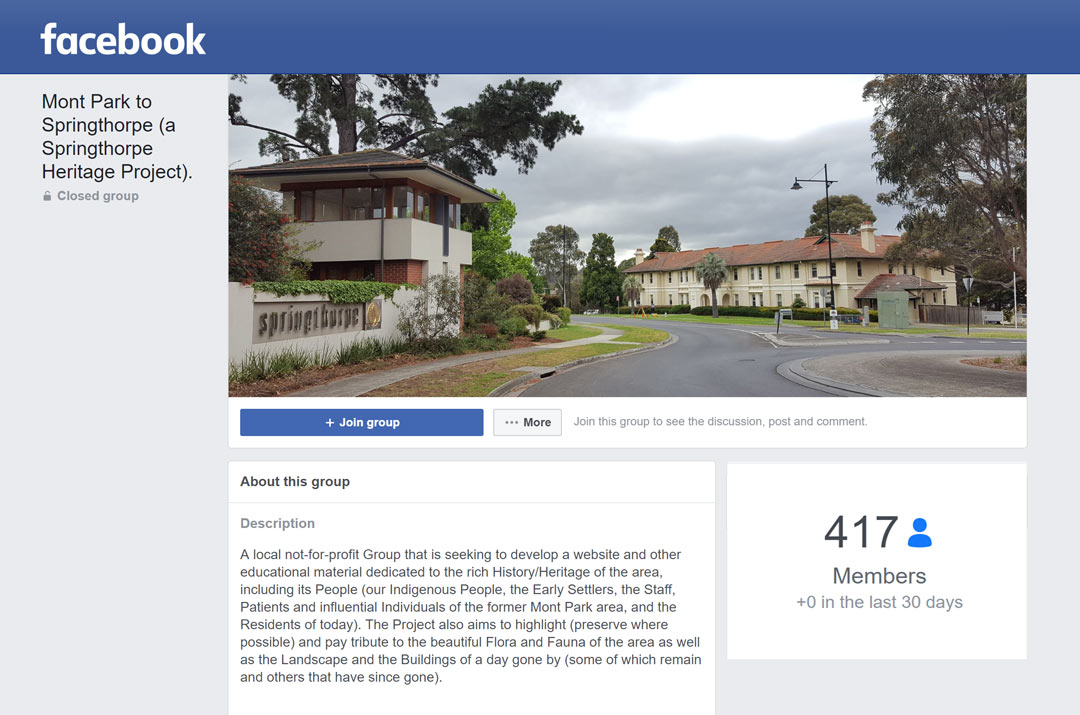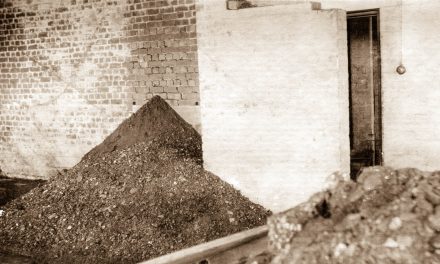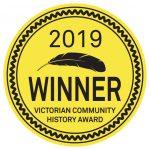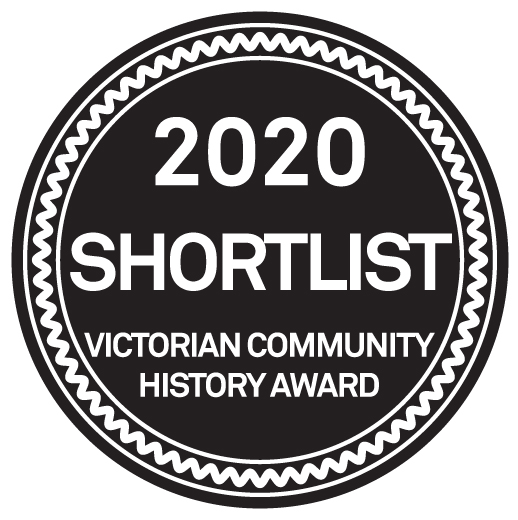Near the Macleod station, south of Cherry Street is an interesting housing estate which was sub-divided in 1922. All the streets were named in honour of Australian Victoria Cross recipients, see https://www.montparktospringthorpe.com/the-victoria-cross-estate/
If you want to take an historic Walk around this Estate go to
https://walkingmaps.com.au/walk/4589
There have only ever been 100 Victoria Cross (VC) awards for Australia, 64 in WWI and 20 in WWII. It is Australia’s highest military honour. Nine of the men who received a VC are honoured with streets named after them in this estate. Also situated in this area are the Victoria Cross Reserve and the Bruce Kingsbury Reserve, named after a WWII VC veteran.
The soldiers honoured are: Captain Percy Cherry, Lieutenant William Dunstan, Sergeant John Dwyer, Lieutenant Robert Grieve, Captain Albert Jacka, Lieutenant Colonel William Joynt, Private Ted Kenna (WWII), Air Vice-Marshal Frank McNamara and Second Lieutenant Rusty Ruthven.
Kingsbury Drive constructed in about 1966, to allow access to the new La Trobe University, was named after Bruce Kingsbury VC (WWII).
The Victoria Cross Estate land had been owned since 1903 by Edith (b.1869) and Malcolm Macleod (b.1867, d.1942) and in 1910 the State Government bought the land from them, along with other land to allow access the Mont Park Asylums.
Some information about each of the military men is presented below, with their photographs.
It seems clear that what they witnessed and what they suffered was so appalling
they don’t want to remember it or talk about it.
(Interview with son of William Dunstan VC, Melbourne journalist Keith Dunstan, in 2011)
- Captain Percy Herbert Cherry (1895 – 1917) served in the Australian Imperial Force (AIF) in WWI. Born in Drysdale near Geelong, the family moved to Tasmania when he was seven. In WWI Cherry was awarded a Military Cross for a successful attack he led on March 2 1917 in France, in which he showed ‘gallantry and devotion to duty’. Then he was awarded the Victoria Cross for ‘bravery, determination and leadership’ in a fierce battle on March 17 in which he was killed, aged only 21. Both medals were awarded posthumously to his father in Hobart.
Cherry Street was earlier known as Military Road. It has an Avenue of Honour comprising sugar gum trees planted 100 years ago, by other military veterans recovering at Mont Park Asylum see https://www.montparktospringthorpe.com/the-avenue-of-honour/
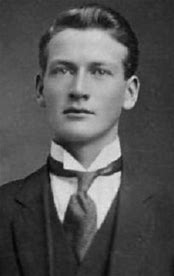
Cherry in UK recovering from injuries in 1916 – from AWM
- Lieutenant William (Bill) Dunstan (1895 -1957) served in the AIF too. He had been born in Ballarat East and was the father of well-known Melbourne journalist Keith Dunstan. His VC was awarded for ‘most conspicuous bravery’ at Lone Pine Gallipoli on 9 August 1915, when Dunstan was aged only 20.
On his return to Australia, William married Marjorie Lillian Stewart Carnell in Ballarat in 1918 and they had two sons and a daughter who all served in WWII. William retired after working at the Herald and Weekly Times newspaper in Melbourne for over 30 years.
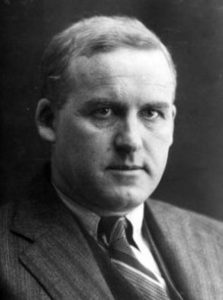
Dunstan – about 1940
- Sergeant John James (Jack) Dwyer was born in 1890 at Cygnet, near Bruny Island in Tasmania. In September 1917 he showed ‘contempt of danger, cheerfulness and courage’ during the fierce Battle of Polygon Wood in Belgium. He was with the AIF and was 27 years old at the time he led this team. He married Myrtle Mary Dillon in 1919 on Bruny Island and they had six children.
Dwyer entered Tasmania State Parliament in 1931 and finally served as Deputy Premier of Tasmania from August 1958 to May 1959, and remained in Parliament almost until his death in 1962.
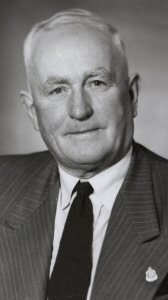
John Dwyer from AWM
- Lieutenant Robert Cuthbert Grieve was born in 1889 in Brighton and he attended Caulfield Grammar and Wesley College. He served in the AIF, being awarded a VC in 1917 for actions in Belgium in which he showed ‘disregard of danger’….. and …… ‘set a splendid example’. He suffered severe shoulder wounds and after further health issues was invalided back to Australia in 1918.
He married May Isabel Bowman (b. 1880, and died in the UK in 1929). May had served in the Australian Army Nursing Service and had nursed him during his illness. They married in Sydney and had a son Robert (Bob) Henderson Grieve (b. 1924) who became a well-known abstract painter. Robert Grieve ran his own soft goods business in Melbourne after his war service. Robert was always a great supporter of Wesley College. He died in 1957 aged 68 years.
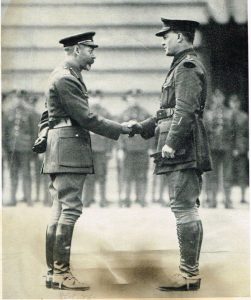
Grieve receives VC from King George V – (source Wesley College)
- Captain Albert Jacka was born January 10, 1893 near Winchelsea and the family moved north to Wedderburn in central Victoria when he was five. He and two of his brothers enlisted in the AIF. Albert Jacka received the VC for bravely re-capturing a trench position from the Turks at Gallipoli in 19th May 1915. This was the first VC to be awarded to an Australian in WWI. Jacka was seriously wounded whilst leading another audacious attack in France in 1916, for which he received a Military Cross. He was wounded several more times and received a further bar to his Military Cross in 1917. He has been described as ‘Australia’s greatest front-line soldier’ earning great respect by his courageous example.
Albert Jacka returned to Melbourne in 1919 and married Frances Veronica (Vera) Carey (b. 1898) in 1921. She worked with him in an electrical goods business. They adopted a daughter Elizabeth Mary (Betty) in 1927. He served as Mayor of St Kilda for a short time, but became ill and died on January 17, 1932 at just 39 years of age.
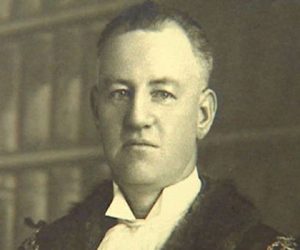
Jacka from ABC news
- Lieutenant Colonel William Donovan Joynt was born in 1889 in Elsternwick. He attended Melbourne Church of England Grammar School. (An exhibition at the school in 2008 recognised him as one of their praiseworthy Alumni.) From 1916 he saw much military activity in Europe and in 1918 in France led a bayonet attack which resulted in the capture of many German prisoners. For his ‘most conspicuous gallantry and devotion to duty’ in this battle he was awarded the Victoria Cross.
At Hawthorn in 1932 he married Edith Amy Garrett (b. 1896, d. 1978) who was a nurse. Joynt was 43 years old, and they had no children. He carried out military service again in Victoria during WWII. He was a valuable advocate for returned servicemen and their families, being a member of Melbourne Legacy and promoting the establishment of the Shrine of Remembrance. He worked in printing and publishing and wrote three autobiographical books: To Russia and Back through Communist Countries (1971), Saving the Channel Ports, 1918 (1975) and Breaking the Road for the Rest (1979).
Joynt had been the last surviving WWI VC recipient when he died in 1986 at age 97.
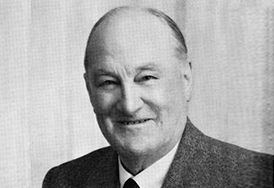
William Joynt – from Melbourne Grammar School article
- Private Edward (Ted) Kenna (1919 – 2009) was the last living WWII recipient of the Victoria Cross. He was born in Hamilton Victoria and is buried there. His award was for ‘magnificent courage and complete disregard for his own safety’ during an attack in the South West Pacific in New Guinea in 1945. In a subsequent battle Ted was severely injured and spent a year in Heidelberg Repatriation Hospital where he met nurse Marjorie Ellen Rushbury (b.1924) who had also served in WWII. They married in 1947 and raised four children in Hamilton, with Ted working for the local council, see http://kokodahistorical.com.au/diggers-stories/ted-kenna-vc
Ted died two days after his 90th birthday and his wife died a few weeks later.
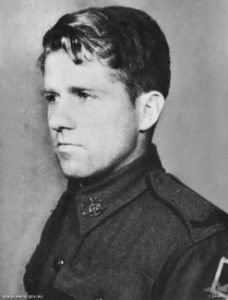
Ted Kenna – from AWM
- Air Vice-Marshal Francis Hubert (Frank) McNamara was born in Rushworth, near Shepparton in central Victoria in 1894 and became a school teacher. He was the first and only Air Force pilot to be awarded a Victoria Cross in WWI. Frank McNamara rescued a crashed pilot near Gaza in 1917, having sustained a leg injury from shrapnel himself. He became one of the RAAF’s original officers when the RAAF was established in Australia in 1921. McNamara’s actions showed marked ’gallantry – his determination and resource…’.
In 1924 back in Melbourne, he married Hélène Marcelle Bluntschli of Brussels whom he had met in Egypt during the war (https://trove.nla.gov.au/newspaper/article/65230050 ). They had a son and a daughter. He remained with the RAAF returning to the UK with appointments there, serving again in WWII. He died in 1961 in the UK.
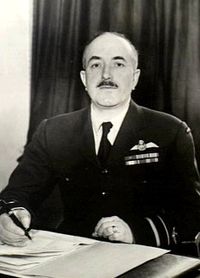
McNamara- AWM
- Second Lieutenant William (Rusty) Ruthven was born in 1893 in Collingwood. His military service started in the final stages of Gallipoli and then he was transferred in 1916 to the Western Front. In France in a display of ‘magnificent courage and determination’ through his isolated efforts Ruthven helped capture German positions and many prisoners. He was presented with his VC by Sir John Monash in France. He was called on to come back to Australia with several other Victoria Cross recipients in October 1918 to, reluctantly in his case, help with recruitment.
In 1919 Ruthven married Irene May White (b.1896), to whom he had been engaged before the war. They had two children. During WWII he served in garrisons and camps units in Victoria. After this War he became the Mayor of Collingwood, and a Member of the Victorian Parliament from 1945 -1961. He died in 1970 in Heidelberg and his wife died in 1983 in Brunswick aged 87.
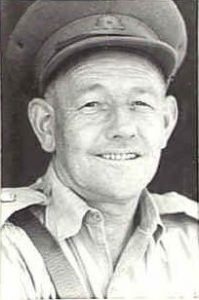
Ruthven in WWII
- Private Bruce Steele Kingsbury was born in Armadale in 1918 and received a Victoria Cross for bravery in WWII in New Guinea. He had shown great ‘determination and devotion to duty’ and was killed on August 29, 1942. He was only 24 years old and had joined the AIF, as had his childhood friend Allen Avery. Avery was fighting bravely alongside Kingsbury when the latter was mortally wounded. A tribute to Kingsbury, the only VC of the Kokoda campaign is recorded in a remarkable video https://www.youtube.com/watch?v=hz6JXC-Uzz8 (from 9.00 to 11.00 min). He was the first soldier to be awarded a VC in the South Pacific conflicts.
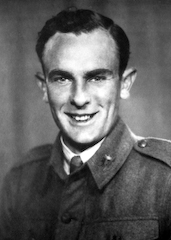
Kingsbury- from AWM
All of these men showed remarkable courage and each made a unique contribution
Dunstan and Jacka received their awards after Gallipoli campaigns, Dwyer and Grieve fought significant battles in Belgium, and Cherry, Joynt and Ruthven saw horrid conflicts in France in WWI. McNamara was the only air force pilot in this group and fought in the Middle East in WWI. Both Kenna and Kingsbury were involved in battles in New Guinea in WWII.
Kingsbury and Cherry never returned home, being killed in conflicts in their early twenties. Several of the other men served as Mayors and/or parliamentarians in civilian life back in Australia.
Don’t forget to view the Heritage Walk https://walkingmaps.com.au/walk/4589
Prepared by Kathy Andrewartha July 2020
Resources:
AIF Project
Australian Dictionary of Biography. National Centre of Biography, Australian National University.
Wikipedia
Fine Spirit and Pluck. World War One Stories of Banyule, Nillumbik and Whittlesea (2016) Yarra Plenty Regional Library. South Morang.
Dunstan – article by his son Keith Dunstan – https://www.smh.com.au/national/we-fought-but-it-was-nothing-that-vc-hovered-over-us-all-20110424-1dt5l.html We fought, but it was nothing – that VC hovered over us all
Grieve and the others, many photographs – http://www.vconline.org.uk/robert-c-grieve-vc/4586859271
Kenna’s sons in New Guinea – http://kokodahistorical.com.au/diggers-stories/ted-kenna-vc
Kingsbury in Kokoda video – https://www.youtube.com/watch?v=hz6JXC-Uzz8
McNamara – ‘The Senior’ Newspaper, April 2017 p. 1, and article in The Camperdown Chronicle about his wedding in Melbourne 1924 https://trove.nla.gov.au/newspaper/article/65230050

